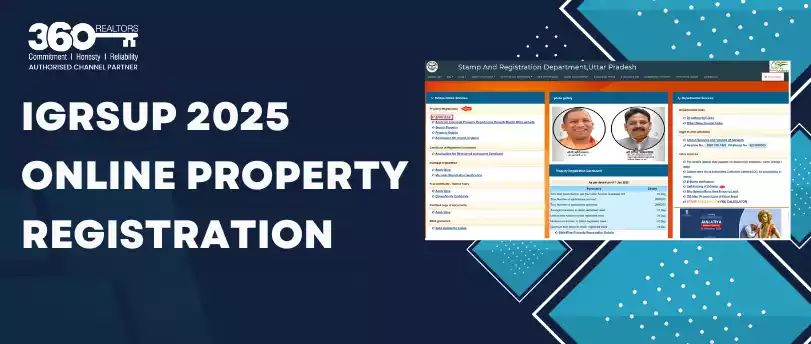Market Snapshot 2018
After a structural slowdown in the recent years, the housing industry in India finally got a breather in 2018. Sentiments across India finally improved with a notable rise in end user engagement in many major micro-markets. Interestingly, as the year draws to a close, there has been a positive jolt to investment activities as well. Regulatory formalization, increased transparency and an upbeat outlook have been instrumental in luring in more real estate buyers into the market. Interestingly, nearly a quarter of the current market is driven by investment activities, which is a welcome change from recent times that were marked by drying up of pure-play investment activities.
Property prices have started to stabilize in most of the major markets across India. Interestingly, there have been select micro-markets across the nation such as Dwarka Expressway (Gurugram), Noida Expressway (Noida), western and eastern peripheries of Pune, central and western suburbs in Mumbai and IT corridors in southern parts of India where property prices have started to move upwards, defying the prevailing norms in the country.
Increased Optimism in 2019
“Indian realty will continue to capitalize on increased transparency and healthier sentiments in 2019. The overall property market will be marked by an unfolding of more vigorous growth. Both end user engagement and investor activities will continue to gain steam across major Indian markets”, said Ankit Kansal, Founder and CEO, 360 Realtors.
In the first half, it will mostly be a bearish market led by the consumer sentiments with little maneuvering space for the developers to jolt the prices upwards. This will further incentivize investment and end-user engagement in the market. However, by the middle of 2019, this state can change with accelerated growth in property prices.
Now zooming down to individual markets, Delhi-NCR will see constant improvement in the market sentiments primarily driven by expansive job markets. Both Gurugram and Noida are seeing a significant expansion in the office intake, thereby indicating upbeat demand. A healthy demand will naturally translate into better growth for the residential markets. Dwarka Expressway will be the favorite, but other upcoming markets such as Golf Course Extension, Sohna and New Gurugram will see an increase in traction. Likewise, growth in Noida will be backed by the influx of IT/ ITeS, publishing, media, consulting and manufacturing companies. Office rental rates are cheaper in Noida compared to Gurugram and this is resulting in many Indian and international companies gravitating to the city in search of bigger and economical commercial space. The Noida market will also get a boost with Jewar airport starting its operations.
In the north, other upcoming cities such as Lucknow and Patna will also see a growth in traction. Interestingly, as the capital of the most populous state in India, Lucknow is becoming an investor-friendly location for buyers from North India. Property prices have been growing unhindered in the recent times in Lucknow and similar sentiments will continue in the times ahead. Lucknow has seen a significant rise in its physical and social infrastructure and this will continue to magnetize investment activities.
In the Mumbai Metropolitan Region (MMR), growth will be mostly seen in the satellite towns of Thane, Navi Mumbai and Kalyan along with western and central suburbs such as Vikroli, Powai and Mulund. Due to high inventory overhang, property prices have eased out in MMR which will boost sentiments. Investment activities in MMR will also stem from a plethora of small ticket size opportunities in MMR- seen mostly in the suburbs and upcoming locations. Low ticket sizes and a healthy IT/ITeS and automobile sector will drive Pune’s real estate industry.
South Hyderabad will see a rise in property prices across the upcoming metro corridor. In Bengaluru, new IT corridors in the south east and north of the city will continue to see a jump in buyers’ activities. Other markets such as Chennai, Kolkata and Cochin will see an unraveling of healthy sentiments as well.
NRIs Will Consolidate Their Position
Over the years, NRIs have become a dominant force in Indian real estate, as around a quarter of the market is presently influenced by them. In FY 2018-2019, as per the estimates by 360 Realtors, close to USD 11.5 billion will be poured in by the expatriate group. This uptrend is expected to rise by double digits in the times ahead. Approximately 40-45% of the market will be dominated by the GCC region, which is becoming a dominant source market. Other source markets such as USA, Canada, Europe and Singapore will also play out loud in the field driven by increased transparency, organized advisory space and a plethora of risk-adjusted low ticket size investment opportunities.
As the industry is becoming more organized due to big bang reforms such as GST, RERA and affordable housing projects, PE players will continue to pour in institutional money into Indian real estate both at entity as well as project levels. In 2017, a total of USD 6.6 billion of PE capital was invested in Indian real estate. The uptrend has continued in 2018 as in the first nine months slightly less than USD 5 billion has been poured in. In the foreseeable future, PE investments will continue to grow ahead.
The Ecosystem Will Upgrade
The overall ecosystem will upgrade as more innovations will be seen across the entire value chain from procurement of the properties to transactions to the post-purchase phases. Currently, around 27% of the market is led by individual brokers whereas 24% of the market is controlled by bigger advisories. The rest of the market is led by online intermediaries and direct sales by the developers. 2019 will continue to see the growth of organized players with shrinkage in deals generated by individual brokers. As RERA stipulates stricter guidelines, many individual brokers will empanel with bigger advisories. This could be a real win-win situation as advisories will benefit from the brokers’ contacts in the local markets whereas brokers can boost their growth stemming from their alignment with bigger players and larger resources.
Amidst a growth in demand, modern advisories will continue to invest heavily in high-quality manpower as well as innovative technology thereby resulting in increased consolidation and aggregation of the markets. Innovations such as machine learning and artificial intelligence might finally shift from mere discussions and start seeing real world applications in Indian realty.






